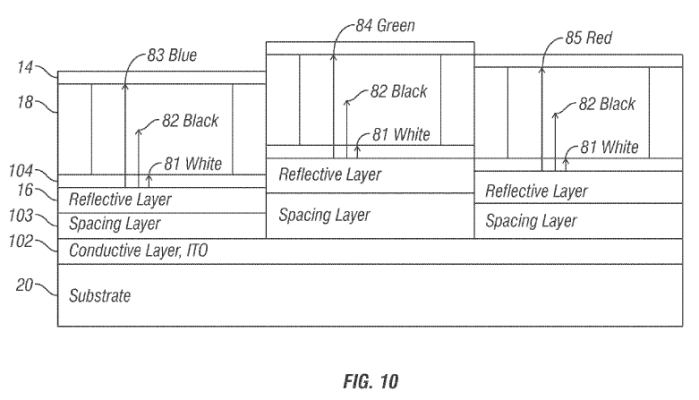For some time I have been watching technology developments towards colour e-reader displays which can handle rapid refresh rates for good video performance and also have a long battery life and there are some promising breakthroughs already described in this blog by Liquavista and E-ink. I was interested to read recently of Korean’s largest bookseller, Kyobo, introducing a colour e-reader featuring Qualcomm’s Mirasol display technology. This is the first time an e-reader has featured the mirasol technology.
The Mirasol approach essentially mimics nature’s way of producing colour. For example the blue colour in butterfly wings is created by an interference effect caused by the photonic crystal nature of their scales. The microstructure of the scales causes light to be coherently scattered.
In a similar way the mirasol technology uses an array of interferometric modulators (IMODs) so that light is either absorbed or reflected and depending on the state of the modulator it can be reflected as red, green or blue light.
On 29 Nov 2011 Qualcomm MEMS Technologies Inc. were granted a US patent US8068269 which describes some of the improvements to the IMOD design to enhance the colour saturation of the reflected light. Claim 1 of the patent reads as follows:
1. A device comprising: a substrate; a fixed reflector; a movable reflector comprising an electrically conductive material, wherein an interferometric cavity is defined between the movable reflector and the fixed reflector, the movable reflector being movable between at least a first position, a second position, and a third position; and a spacing layer positioned on a side of the fixed reflector that is opposite from the movable reflector, wherein the spacing layer is positioned between the fixed reflector and the substrate, wherein the spacing layer provides a filtering cavity configured to improve color saturation of light reflected by the interferometric cavity.
Figure 10 from the patent illustrates how a tri-state modulator has been constructed with spacer layers to provide the building blocks for the colour display.
 Text from the patent describes how the blue module works:
Text from the patent describes how the blue module works:
The blue modulator has three states. In the first state, the movable reflector 14 is at a first position, for example, position 81, and the blue modulator substantially reflects white light. In the second state, the movable reflector 14 is at a second position, for example, position 82, and the blue modulator substantially reflects no light. In the third state, the movable reflector 14 is at a third position, for example, position 83, and the blue modulator substantially reflects blue light.
The other colour modulators work similarly and in order to increase the saturation of the light from the red, green and blue modulators, the thickness and index of refraction of the spacing layer 103 is selected respectively for the red, green and blue modulators. Text describing the way the spacer layer works is shown below:
The spacing layer 103 increases the distance between the movable reflector 14 and the conductive layer 102 and therefore decreases the capacitance between the movable reflector 14 and the conductive layer 102 and provides adequate protection against shorting between the movable reflector 14 and the conductive layer 102.
At the same time, the spacing layer 103 defines a second interferometric modulating cavity between the fixed reflector 16 and the conductive layer 102. The thickness and composition (index of refraction) of the spacing layer 103 can be adjusted to vary the effective optical path length of the second interferometric modulating cavity to produce a desired color filter. For example, the spacing layer 103 may be adjusted so that the second interferometric modulating cavity acts as red, green or blue band pass filters as desired, and therefore the multi-state interferometric modulator 12 reflects saturated red, green or blue light.
Full details of the approach are covered in the patent including the colour gamut response for such a device. The other attractive features of the mirasol display are that the refresh rate for the display is extremely fast (microseconds rather than milliseconds) so that video with no motion blur is possible. The display also works in a bi-stable mode which allows for near-zero power usage in situations where the display image is unchanged.
There are many patents now granted in the Mirasol portfolio and I have just picked out one of the recent ones. Contact me if you are interested in details of any of the earlier granted patents.